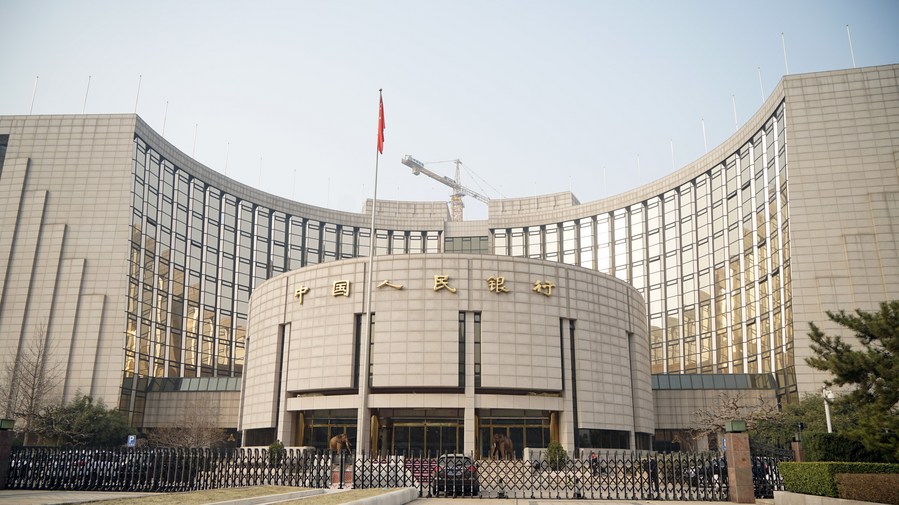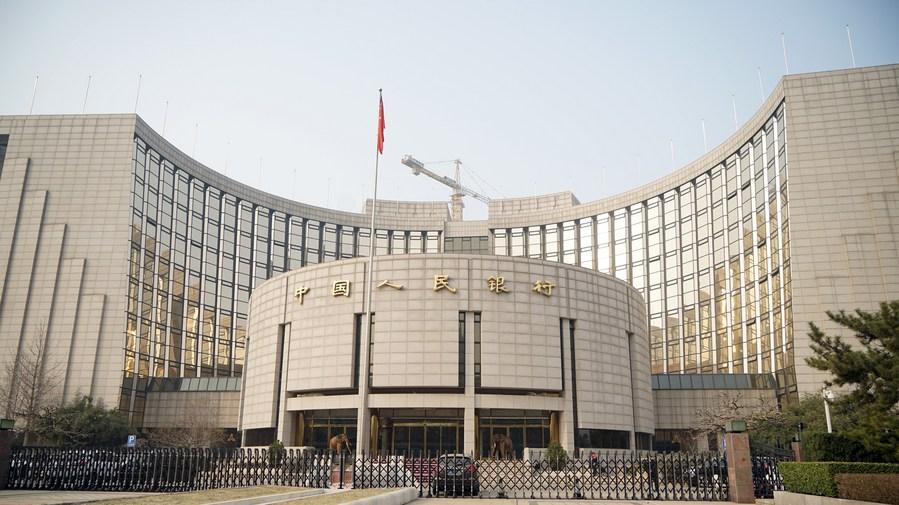
Photo taken on March 13, 2018 shows the headquarters of the People's Bank of China. (Xinhua/Cai Yang)
BEIJING, June 3 (Xinhua) -- After China announced to hike the required reserve ratio (RRR) for foreign currency deposits by two percent from June 15, market players broadly interpreted the move as a signal to smash the overheated one-way appreciation expectations on the Chinese currency yuan.
Under such circumstances, where will the yuan or Renminbi (RMB) be heading for?
Many analysts tended to believe that the flexibility of RMB will increase in the following future and two-way fluctuations are likely to be regular situations for the Chinese currency.
On Thursday, the central parity rate of RMB weakened 38 pips to 6.3811 against the U.S. dollar, according to the China Foreign Exchange Trade System (CFETS). Before the RRR hike, the central parity rate of RMB against the U.S. dollar once hit 6.3682 on May 31, a new high since May 18, 2018.
-- RRR hike to alleviate RMB appreciation anticipations
On May 31, Chinese central bank, the People's Bank of China (PBOC) announced to raise the RRR for foreign currency deposits from five percent to seven percent to strengthen management of foreign exchange (forex) liquidity of financial institutions at home.
The adjustment aimed at tightening the U.S. dollar liquidity and reducing U.S. dollar supply in China to ease the appreciation pressures on RMB and break the one-way appreciation expectations, said Wu Chaoming, chief economist with Chasing Securities.
Statistics with PBOC showed that based on the around one trillion U.S. dollars of foreign currency deposits held by financial institutions in China by the end of April, the 2-percent RRR hike is likely to lock up about 20 billion U.S. dollars of foreign currency funds of commercial banks and reduce their aggregate foreign currency deposits through corresponding decreases in derivative deposits, which is much larger than the 20 billion U.S. dollars of foreign currency deposits locked.
Guan Tao, global chief economist with BOC International (China) Co., Ltd. said that PBOC's move is helpful to creating a relatively balanced forex market in China by conveying two signals.
For one thing, the central bank will not allow RMB to appreciate at a rapid pace and will not hesitate to take actions when necessary.
Previously since May 2020, the Chinese currency yuan has appreciated a lot against the U.S. dollar and further appreciation may make the value of RMB not in line with China's economic fundamentals.
At a time when impacts of the COVID-19 pandemic have not completely disappeared, continuous appreciation of RMB may cause notable burdens to Chinese exporters and more and more experts think that RMB has excessively appreciated against the U.S. dollar currently.
For the other, PBOC picked a relatively powerful tool to crack down the overheated RMB appreciation expectations, showing its determination to regulate market expectations as the RRR hike is much heftier than the previous hikes, according to Guan.
Instead of using habitually adopted vehicles, PBOC chose the foreign currency deposit RRR this time, which unveiled the diversity of the tools in its tools kit and hinted likely use of other tools whenever obvious speculations on domestic forex market appear.
-- Two-way fluctuations to be normal for RMB exchange rate
In the following future, the flexibility of RMB's exchange rate will increase by a certain degree and two-way fluctuations will be normal, a research report with CITIC Securities told.
Previously on May 23, Liu Guoqiang, deputy head of PBOC once said the exchange rate of RMB, which presented two-way fluctuations since the beginning of this year, remained basically stable at a reasonably balanced level.
Being determined by the market, the exchange rate of RMB will be up to market demand and supply and changes in international financial market, with two-way fluctuations to be a normal state in the following future, according to Liu.
Last week, a national forex market self-discipline meeting also proposed that there would be many market and policy factors to affect the forex market and it is possible for RMB to appreciate or depreciate. No matter in the short term or long term, two-way fluctuations will be a regular situation for the exchange of RMB.
This stance corrects the biased view of the market that the exchange rate is an instrument and strategy and will help curb the market's unilateral expectations of an appreciation of RMB, according to a bank forex trader.
Zhao Wei, chief economist of Kaiyuan Securities echoed the view. As Zhao held, strong fiscal stimulus will help the U.S. economy recover from the epidemic faster than other economies. Stronger economic fundamentals and accumulated inflationary pressure will cause the U.S. Fed to change its policy ahead of other mainstream central banks such as the European Central Bank. Therefore, a weakening of the U.S. dollar index is unlikely, and the two-way fluctuation of the RMB exchange rate will be the norm.
Sheng Songcheng, former director of the Statistics and Analysis Department of the PBOC, said that the current RMB appreciation may have overshot, which is unsustainable and is not justified by domestic and international economic and financial conditions.
Specifically, the U.S. economy is expected to rebound fully in the second half of 2021, and the U.S. dollar may strengthen accordingly. Meanwhile, interest rate spreads between the RMB and the U.S. dollar has changed from a substantial widening last year to narrowing, and a reduction in the inflow of hot money is possible, Sheng explained. (Edited by Duan Jing with Xinhua Silk Road, duanjing@xinhua.org)




 A single purchase
A single purchase









